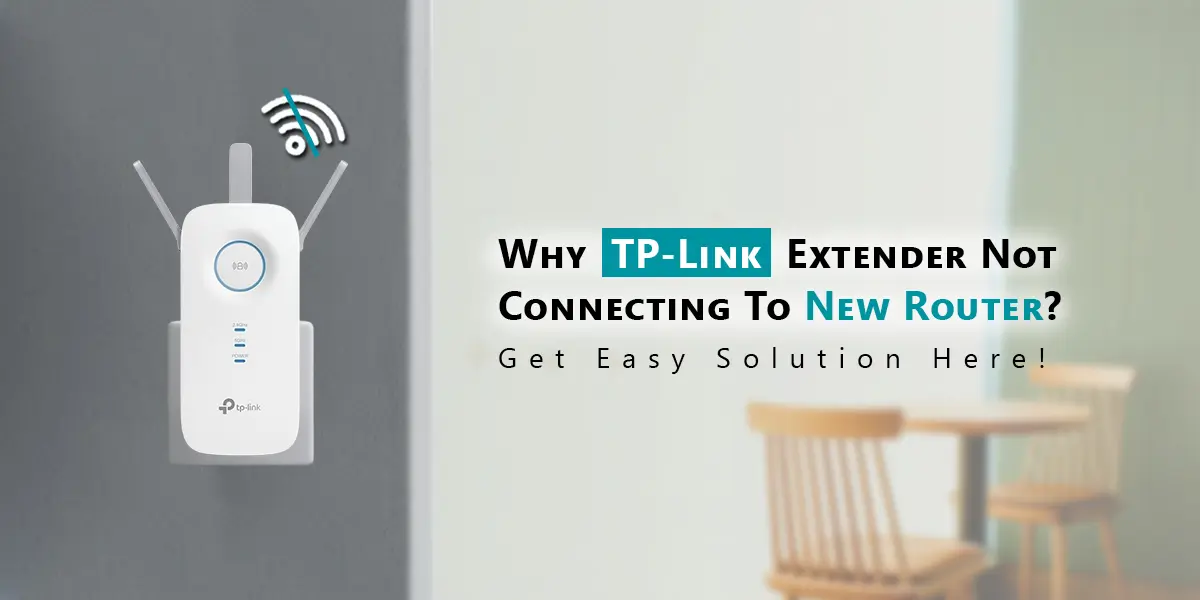
Why TP-Link Extender Not Connecting To New Router?
In today’s digitally linked world, Wi-Fi extenders have become indispensable tools for providing strong and dependable internet coverage across our homes and offices. TP-Link, a well-known name in the networking equipment market, sells a variety of Wi-Fi extenders that are meant to increase the reach and strength of your wireless network. TP-Link extenders, like any other technological gadget, can occasionally malfunction. One common issue that people encounter is trouble connecting their TP-Link extender to a new router. This blog will explore the conceivable causes of this TP-Link extender not connecting to new router and contemporary real-world explanations to aid you get your extender up and operating efficiently.
Common Causes For TP-Link Extender Not Connecting To New Router
Here you can discover common causes for your TP-Link extender not connecting to a new router,
Incompatible Extender and Router Settings
Incompatible settings are one of the most common reasons your TP-Link extender fails to connect to a new router. Routers and extenders must share the same frequency band and have suitable security settings. Connection troubles can occur if the new router is configured to a frequency band (such as 5 GHz) that your extender does not allow.
Incorrect Extender Placement
The placement of your TP-Link extender has a significant impact on its performance. If the extender is too far away from the router, it may be unable to connect due to a weak signal. Similarly, locating the extender in an area with high interference, such as near other electronic devices or thick walls, can impede its capacity to establish a solid connection.
Outdated Firmware
Firmware upgrades are critical for keeping networking equipment compatible and effective. If your TP-Link extender’s firmware is old, it may cause TP-Link extender not connecting to new router. Manufacturers frequently offer firmware upgrades to address compatibility issues, improve performance, and increase security.
Incorrect Setup Procedure
Setting up a TP-Link extender requires particular processes, and any variation can cause connectivity issues. Using the incorrect configuration method, such as the WPS button or the web-based interface, or failing to complete the tp link extender setup procedure completely, can prohibit the extender from connecting to the new router.
Network Configuration Changes
When you change routers, the network configuration changes. This comprises the SSID (network name), password, and other network configurations. If the extender remains configured with the previous router’s settings, it will be unable to connect to the new router.
Troubleshooting Steps For TP-Link Extender Not Connecting To New Router
1. Verify Compatibility
First, make sure your TP-Link extender is compatible with the new router. Examine the frequencies and security protocols supported by both devices. Most current extenders support both the 2.4 GHz and 5 GHz bands, but you should double-check. If your extender only supports 2.4 GHz and the router is configured to 5 GHz, you must change the router settings to enable 2.4 GHz.
2. Update Firmware
Check to see if there is a firmware update for your TP-Link extender. To do this, go to the TP-Link support page and search for your extender model. Download the most recent firmware and trail the commands to apprise your device. Firmware updates can remedy a variety of compatibility and performance concerns.
3. Reset and Setup The Extender
Occasionally starting yet again is the best option. Press the reset button on your TP-Link extender for roughly 10 seconds, or until the LED lights begin to flash. After resetting the extender, reconfigure it using TP-Link’s suggested setup method, such as the web-based interface or the Tether app. During the configuration procedure, ensure that you enter the precise SSID and keyword for the Connect TP-Link WiFi extender to new router.
4. Optimal Placement
Make sure your extender is in an ideal spot. Ideally, it should be inside your new router’s range yet close enough to the places that require additional coverage. Avoid placing it near electronic equipment that may interfere, such as microwaves, cordless phones, or Bluetooth devices.
5. Manually Configure IP Settings
Automatic IP configurations can occasionally lead to disputes. Manually setting the IP address on your TP-Link extender may help. Access the extender’s web interface, go to the network settings, and assign a static IP address that is within range of your new router but not already in use by other devices.
Advanced Solutions For How To Connect TP-Link WiFi Extender To New Router
1. MAC Address Filtering
Some routers include MAC address filtering, which permits only devices with explicit MAC addresses to attach. Check to see if this option is enabled on your new router, and then add your TP-Link extender’s MAC address to the permitted list. This can be found under the router’s security settings.
2. Change Wi-Fi Channels
Routers frequently default to a single Wi-Fi channel, which can grow overcrowded and create interference. Log into your router’s settings and try altering the Wi-Fi channel to a reduced amount of swarming one. This can enhance overall connection quality and allow your extender to connect more reliably.
Conclusion
While it might be irritating when your TP-Link Extender Not Connecting to New Router or How to Connect TP-Link WiFi extender to new router, understanding the possible causes and how to troubleshoot the problem can save you a significant amount of time and effort. You can often remedy the issue by checking compatibility, updating firmware, resetting and reconfiguring the extender, and optimizing its placement. If all else fails, our team is here to help you get the most out of your networking gear.